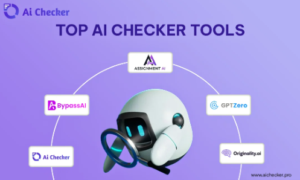The educational landscape is undergoing a seismic shift, with technology, particularly AI, playing a pivotal role in this transformation. As the boundaries of conventional teaching methodologies are continuously stretched, there is an increasing convergence of AI and education, revolutionizing how knowledge is imparted and assimilated. AI’s potential in the classroom isn’t just about futuristic scenarios but tangible, immediate benefits that are already making waves in schools worldwide.
According to Education Week, 40% of teachers have integrated AI tools or discussions about AI into their school lessons. An impressive 90% of students who study with ChatGPT find it more beneficial than traditional tutoring. This growing affinity for AI-driven tools among educators and learners is a testament to the monumental impact AI is set to have on education. Brian Sathianathan, Co-Founder of Iterate.ai, offers invaluable insights for educators to seamlessly transition into this new era of AI-enhanced teaching.
With both students and educators looking to AI to assist in the classroom and learning spaces, it is imperative to understand how to adapt to AI tech. Brian Sathianathan, Co-Founder of Iterate.ai, has five tips to help educators this year.
1. Embrace continuous learning
The world of AI is constantly evolving. Participate in workshops, online courses, or professional development programs focused on AI in education. Stay informed about the latest trends, tools, and technologies to understand how they can be applied in the classroom.
2. Integrate AI thoughtfully
Consider what specific problems or challenges AI can solve in your classroom. Whether it’s personalizing learning, automating administrative tasks, or enhancing collaborative projects, ensure that AI aligns with your specific needs.
3. Foster digital literacy and ethics
When teaching your students about AI, teach them how to use it responsibly, and include issues related to privacy, bias, and security. Integrating digital literacy into the curriculum can create more informed and conscientious digital citizens.
4. Take advantage of affordable courses
It is important to recognize that not all students may have equal access to technology, and teachers often need to prioritize budget-friendly tools when they can. Platforms like Google are offering courses to introduce people to AI for free, among other affordable learning tools.
5. Experiment with other educational tools and seek experts
There are plenty of tools out there for all ages to learn about AI, including sites like Introduction to AI Lab, which provides five hands-on activities for learners to explore using the lab to train machine-learning models to recognize shapes and recommend different food items to a restaurant. Additionally, there are many industry leaders out there at the head of the AI game. It could be extremely beneficial to reach out to them to speak to students.
“In embracing AI in the classroom, educators must balance innovation with empathy, weaving technology into learning not as a replacement, but as an enhancement. It’s about thoughtful integration, continuous learning, ethical guidance, accessibility for all, and never losing sight of the human connection that lies at the heart of education,” explains Brian Sathianathan.
Iterate.ai is an AI-powered low code software and ecosystem intended to accelerate innovation projects within large enterprises.
Recently listed as one of the The KMWorld’s AI 100, Iterate’s platform accelerates the development and deployment of AI-centric enterprise applications and their low-code environment empowers them to develop and deploy digital solutions faster, enabling enterprises to go to market 17x faster with their digital initiatives.
The integration of AI into the educational sphere presents both immense opportunities and intricate challenges. As educators navigate this evolving landscape, the onus is on leveraging the profound capabilities of AI, ensuring they supplement, rather than supplant, the traditional pedagogical methods. It’s imperative to maintain a judicious balance between technological advancements and the foundational principles of education. The goal is clear: to harness AI’s transformative power in service of enhancing the educational experience while preserving the core human values that underpin the teaching and learning process. As we progress, this symbiotic relationship between AI and education will undoubtedly define the future trajectory of global education.



































